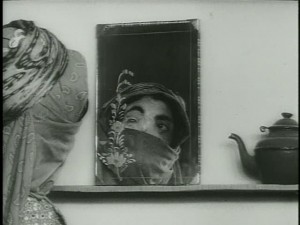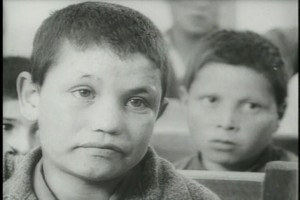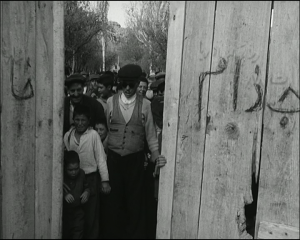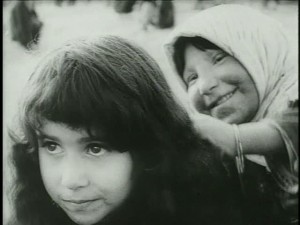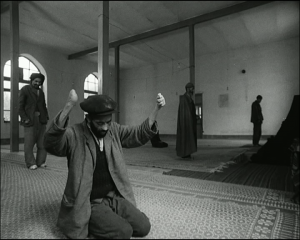The following was commissioned by and written for Asia’s 100 Films, a volume edited for the 20th Busan International Film Festival (1-10 October 2015). — J.R.
The House is Black is the most acclaimed of all Iranian documentaries. It was directed by Forough Farrokhzad (1935-1967), widely regarded as the greatest of all Iranian women poets and the greatest Iranian poet of the 20th century, who died in a car accident when she was only 32. It was Farokhzad’s only film, produced in 1962 by her lover Ebrahim Golestan (an important filmmaker in his own right, for whom she also worked as an editor, and who serves as one of the film’s narrators). The film observes the tragic life of lepers in an isolated leprosy hospital (a hell on earth and a nest of suffering and death) near Tabriz in northwestern Iran. The Society for Assisting Lepers commissioned the film, and the director’s intention was “to wipe out this ugliness and to relieve the victims.”
Farrokhzad avoids infringement by creating a close relationship with the lepers, and by searching for the seeds of joy and vitality within the hopelessness. She depicts the inhabitants in their daily occupations, having meals, praying, the children playing ball and attending school. The atmosphere of the film is built using the tension between movement and stillness and sound and silence. It is spliced with Farrokhzad’s poems and quotes from the Old Testament and the Koran.
The House is Black premiered at the Oberhausen Short Film Festival in 1963, where it received the top prize as the best documentary. It also took 19th place in the Sight & Sound poll for the greatest documentaries of all time in 2014.
Defying the standard taboos and protocols concerning lepers — especially the injunction to avoid physical contact with them for her own safety — Forugh Farrokhzad wound up permanently adopting a boy in the colony named Hossein Mansouri, the son of two lepers, who appears in the film’s final classroom scene, taking him with her to Tehran to live at her mother’s house.
It would be fascinating as well as instructive to pair The House is Black with Tod Browning’s 1932 fiction feature Freaks — which oscillates between empathy and pity for its real-life cast of midgets, pinheads, Siamese twins, and a limbless “human worm,” among others, and feelings of disgust and horror that are no less pronounced. By contrast, Farrokhzad’s uncanny capacity to regard lepers without morbidity as both beautiful and ordinary, objects of love as well as intense identification, offers very different challenges, pointing to profoundly different spiritual and philosophical assumptions.

